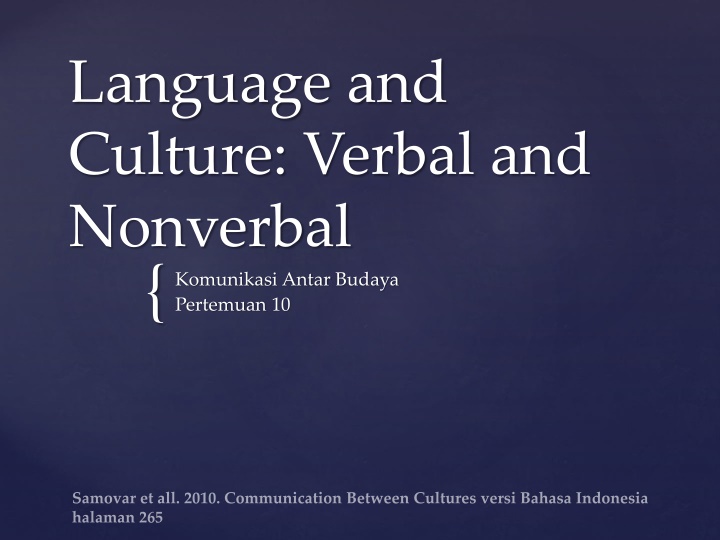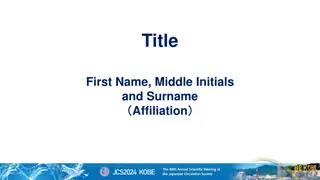
Language and Culture: Key Concepts and Interactions
Explore the symbiosis between language and culture, the significance of verbal and nonverbal communication in intercultural interactions, and the impact of the digital age on global linguistic dynamics.
Uploaded on | 0 Views
Download Presentation

Please find below an Image/Link to download the presentation.
The content on the website is provided AS IS for your information and personal use only. It may not be sold, licensed, or shared on other websites without obtaining consent from the author. If you encounter any issues during the download, it is possible that the publisher has removed the file from their server.
You are allowed to download the files provided on this website for personal or commercial use, subject to the condition that they are used lawfully. All files are the property of their respective owners.
The content on the website is provided AS IS for your information and personal use only. It may not be sold, licensed, or shared on other websites without obtaining consent from the author.
E N D
Presentation Transcript
Language and Culture: Verbal and Nonverbal Komunikasi Antar Budaya Pertemuan 10 {
Communication exchange Language and Identity Language and Unity Social and Cultural Functions of Language
What is language? At the most basic level, language is merely a set of shared symbols or signs that a cooperative group of people has mutually agreed to use to help them create meaning. The symbols and their meanings are often arbitrary. Language and Culture
Accent Dialect Argot Slang Branding LANGUAGE VARIATIONS
In order to have culture, language is needed so group members can share knowledge of beliefs, values, and behaviors and engage in communal endeavors. In turn, culture is needed to organize disparate individuals into a cohesive group so those beliefs, values, behaviors, and communal activities can develop. The Symbiosis of Language and Culture
High and Low Context High and Low Power Distance Individualism and Collectivism Language as a Reflection of Cultural Values
Interpersonal Interactions Interpretation and Translation Mindfulness Speech Rate Interpretation Vocabulary Translation Monitor nonverbal feedback checking Language in Intercultural Communication Interactions
Intercultural Marriage { What problem do you think can happen in intercultural marriage?
The digital age has greatly enhanced the ability of people around to world to easily and quickly connect with others through a variety of media. English continues to be the most common language among Internet users, which has raised concern of it becoming the world s dominant language. What seems possible, however, is an oligarchy of the world s largest languages Chinese, Spanish, English, Arabic, Malay, Hindi, Russian each of them dominating in its geographical region, where it also enjoys economic and cultural influences. Danet and Herring Communication Technology and Language
















